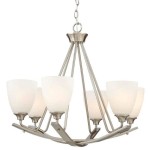Home Decor Colour Schemes
Selecting a colour scheme is a foundational step in interior design. A well-chosen palette can dramatically impact a room's atmosphere, creating a sense of calm, energy, or sophistication. Understanding the principles of colour theory and how different hues interact can empower homeowners to make informed decisions and achieve their desired aesthetic.
Colour schemes are typically categorized into several key types. Monochromatic schemes utilize variations in shade and tint within a single colour, creating a cohesive and calming effect. Analogous schemes employ colours adjacent to each other on the colour wheel, fostering a sense of harmony and visual flow. Complementary schemes, in contrast, leverage colours opposite each other on the colour wheel, producing a dynamic and vibrant look. Triadic schemes involve three colours evenly spaced on the colour wheel, offering a balanced yet stimulating aesthetic. Finally, tetradic schemes, also known as double complementary schemes, use two pairs of complementary colours, creating a rich and complex palette.
Beyond these basic categories, numerous variations and nuances exist within colour scheme selection. Consider incorporating neutral colours like white, beige, grey, and black. These versatile hues can act as a backdrop, allowing more vibrant colours to stand out, or they can be used to create a minimalist and sophisticated aesthetic on their own. Metallic accents, such as gold, silver, copper, and brass, can add a touch of glamour and visual interest to any colour scheme.
The psychological impact of colour should also be considered when choosing a scheme. Warm colours, such as reds, oranges, and yellows, evoke feelings of energy, enthusiasm, and warmth. These are often suitable for social spaces like living rooms and dining rooms. Cool colours, including blues, greens, and purples, promote relaxation, tranquility, and focus. These are often preferred for bedrooms and bathrooms.
The size and lighting of a room significantly influence colour perception. Light colours tend to make a room feel larger and brighter, while dark colours can create a cozy and intimate atmosphere. Natural light can dramatically alter how colours appear, so it’s essential to observe how the chosen colours look throughout the day. Artificial lighting also plays a role, with warm or cool-toned bulbs potentially affecting the overall colour scheme.
When selecting a colour scheme, drawing inspiration from existing elements within the space can be beneficial. Consider the style of furniture, artwork, and flooring. If a room features prominently patterned elements, a more subdued colour palette might be appropriate to avoid visual overload. Conversely, a room with neutral furnishings can benefit from a bolder colour scheme to add personality and visual interest.
Testing paint colours before committing to a full room is highly recommended. Paint small swatches on different walls to observe how the colours interact with the light and existing elements. Living with the swatches for a few days allows for a more accurate assessment of how the colours will appear in various lighting conditions.
Incorporating texture alongside colour can add depth and complexity to a room's design. Consider using textured fabrics, wall coverings, and decorative accessories to enhance the overall aesthetic. The interplay of light and shadow on textured surfaces can further enrich the colour scheme.
Maintaining a consistent colour scheme throughout a home can create a sense of flow and cohesiveness. This doesn't necessarily mean using the same colours in every room, but rather ensuring that the chosen palettes complement each other. Transitioning between different colour schemes can be achieved through the use of shared accent colours or neutral elements.
Staying informed about current colour trends can provide inspiration and fresh ideas. Design magazines, online resources, and social media platforms offer a wealth of information on the latest colour palettes and design styles. However, personal preference should always be the primary guiding factor when choosing a colour scheme.
Consulting with a professional interior designer can provide valuable guidance and expertise in selecting a colour scheme. A designer can assess the unique characteristics of a space, understand individual preferences, and develop a tailored colour palette that meets specific design goals.
Experimentation is key to finding the perfect colour scheme. Don't be afraid to try different combinations and step outside of comfort zones. The process of exploring different palettes can be a rewarding and creative experience, ultimately leading to a personalized and visually appealing space.

Color Palette For Home 12 Combos Designers Love Havenly Interior Design Blog

20 Top Interior Color Schemes For Your House Design Foyr Neo

5 Tips To Help You Choose The Right Colour Scheme Home Decorating Ideas

20 Best Modern Home Color Palettes Room Combinations Offeo Interior House Colors Palette Living Combination

Interior Design Styles And Colour Schemes Berger Blog

15 Designer Tricks For Picking A Perfect Color Palette

Choosing Right Colors How To Use Psychology For Interior Design

20 Beautiful Bedroom Color Schemes Chart Included Colors

Color Palette For Home 12 Combos Designers Love Havenly Interior Design Blog

20 Top Interior Color Schemes For Your House Design Foyr Neo







